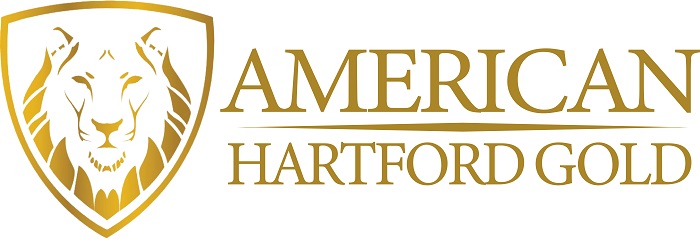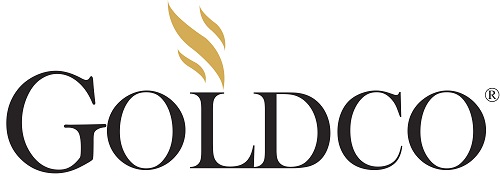Last Updated on April 17, 2024 by Ben
401k Rate of Return
The usual 401(k) portfolio generates an average annual return of 5% to 8%, according to many retirement planners. However, your 401(k) return is determined by a number of variables, such as the amount you contribute, the type of investments you choose, and any expenses charged. This post will go through each of these points in depth so you can get the most out of your 401(k).
What Rate of Return Should I Expect on My 401(k)?
It’s a pain to bring out the old, undecided term “it depends.” However, it is the case. The rate of return on a 401(k) plan is linked to the investment portfolio you construct using your contributions as well as current market conditions.
Although each 401(k) plan is unique, contributions amassed within the plan, which are diversified among stock, cash investments, and bonds, can provide an average annual return ranging from 5% to 8%, depending on how you distribute your assets across those investment choices.
How 401(k) Plans Work
A retirement plan funded by the company, such as a 401(k), may be important for accumulating long-term savings. Employees can contribute money—a percentage of their salaries—on a pretax [or after-tax] basis to their employer’s 401(k) plan through payroll deferrals. Employers frequently match employee payments up to a certain proportion, offering even more reason to save.
The number of investment alternatives available to employees and their employers will differ, but each 401(k) provides a variety of investments from which contributors can choose—usually mutual funds and exchange-traded funds (ETFs). Employees enjoy many other advantages as well, including tax-free growth and matching contributions, economies-of-scale in 401(k) plans, and the assortment of their investment alternatives.
It’s All About the Asset Allocation
The performance of your 401(k) account is determined by your asset allocation: the sort of assets you invest in, the mix of funds used, and how much money you’ve set aside for each.
Investors see different outcomes depending on the investment alternatives and allocations available within their specific plans—and how they use them. Two workers at the same firm might be enrolled in the same 401(k) plan yet achieve diverse rates of return based on the investments they choose.
Different assets fulfill different needs and perform in very different ways. Debt instruments, such as bonds and CDs, provide a secure income but not much growth; therefore, they do not offer as much of a return. Real estate (accessible to investors in a real estate investment trust (REIT) or a real estate mutual fund or ETF)) offers both cash flow and capital growth, in addition to income. Equities, often known as stock, offer the best return potential.
However, the equities market is enormous, and returns vary greatly across different markets. Stocks with rich dividends may provide a generous income, but they seldom appreciate it. Blue-chip and large-cap equities—those of well-established, major firms—offer consistent returns but on the lower side. Smaller, faster-growing businesses are commonly referred to as “growth stocks,” implying that they have the potential to provide a higher return.
Generally, what goes up may also come down: the greater a stock’s potential for rapid development, the higher its chances of massive declines. It’s known as the risk-return tradeoff.
Investors should first consider their risk tolerance and the length of time they have until they need to begin withdrawing funds from their retirement account when determining their asset allocation. Investors who have a low appetite for risk are generally better off investing in less volatile allocations that may result in lower rates of return over time.
Investors with a higher risk tolerance are more inclined to choose investments with greater potential for greater profits and more volatility.
How Much Should You Contribute to Your 401(k)
The short answer is as much as you can afford. However, the IRS establishes 401(k) plan contribution limits each year. You may contribute up to $20,500 in 2022 or $27,000 if you are at least 50 years old.
401(k) plan contributions are calculated based on your yearly income. Many financial consultants recommend 10% to 15% as a goal. However, according to the Vanguard study, 41% of plans that auto-enroll participants do it with a 3% contribution. This means that if your company offers a 401(k) match, you should contribute at least 3%. Otherwise, you’re losing out on free money.
How much you should contribute is determined by your present income, your expected retirement date, and how much you believe you’ll need to live comfortably in retirement.
A 401(k) calculator may be used to figure out how much you should put into your plan in order to obtain the amount you desire for retirement. A Social Security calculator can assist you in visualizing how much money you will receive after retiring.
Even if you put as much money as possible into a well-diversified portfolio, high fees can take a significant bite out of even the best investment returns.
Balancing Risk and Returns
Now, it’s time to get back to that 5% to 8% range we mentioned earlier. It’s an average return rate based on the typical moderately aggressive 401(k) plan allocation, which is 60% equities and 40% debt/cash. A 60/40 portfolio strategy is designed to produce long-term growth via stock holdings while limiting volatility with bonds and cash assets.
The 60/40 portfolio is roughly in the center of the risk/reward spectrum. For example, if you invest 70% in equities, 25% in debt, and just 5% in cash, you may anticipate higher double-digit returns over time. The volatility within your account, on the other hand, might be far greater.
If you went even more conservative—75% debt/fixed-income investments, 15% equities, 10% cash—your portfolio would have a relatively smooth ride; however, returns of only 2 to 3 percent (depending on current interest rates).
An individual with a long time horizon, on average, assumes more risk in a portfolio than someone who is approaching retirement. And it’s quite common and wise for investors to move assets within the portfolio as they approach retirement.
Target-date funds have become a popular selection among 401(k) plan participants as a one-stop-shopping option to make this transformation. Mutual funds that are co-managed or co-administered allow investors to pick a retirement year around their anticipated time of retiring, such as 2025 or 2050.
Funds with a later target date allocate more assets to risky investments than funds with a nearby target date. Target-date funds have different rates of return on a company-by-company basis, but they do enable investors to set asset allocation within a 401(k) without having to worry about it.
Understand the Impact of 401(k) Plan Fees
It’s possible that your employer isn’t demanding out-of-pocket expenses to run your 401(k) plan, but you are still paying them. These costs are typically levied on the entire sum of your assets, so if they’re too high, they can significantly harm your returns.
The Securities and Exchange Commission released a recent study that painted a vivid picture of how even a seemingly insignificant charge can add up. According to the study, a 1.00% yearly fee lowers a portfolio’s value by $30,000 over 20 years, compared to one with a 0.25% annual charge.
The 401(k) plan is a complicated machine with lots of moving parts, and fees may be found anywhere. This document shows the entire plan’s assets and expenditures. Another key document is your fund prospectus, which tells you what it costs to run the mutual funds or investments you’re invested in.
-
Administrative Fees
These are costs that come with the overall management of your company’s 401(k) plan. Recordkeeping, legal representation, and services provided to employees, such as educational seminars, are all examples of these fees.
-
Expense Ratios
This is the number of a fund’s assets used to pay for the fund’s overall management and routine maintenance. The cost ratio comes from a fund’s total assets, so you and everyone else invested in it indirectly through investment gains. The expense ratio should be included in your prospectus.
-
12b-1 fees
These expenses are included in the fund’s expense ratio if they exist. 12b-1 fees are normally used to promote the investment.
-
Sales Loads
These are known as trading fees and include the costs of acquiring or disposing of your fund’s shares.
There are two main types of loads. Front-end costs are charged when you purchase fund shares, and they are subtracted from the total amount invested. Back-end expenses are incurred when you sell shares after a specific length of time.
Some mutual funds include a blend of both, while others do not. It’s critical to double-check with your fund prospectus to see if it has any sales loads. These fees are paid indirectly by investors in the particular fund through their assets. A fund’s sales load is not factored into its expense ratio.
-
Investment Advisory Fees
These are also known as plan maintenance fees and are a type of ongoing plan expense associated with monitoring investment alternatives. If the plan administrator does significant study and additional continuous work on your policy’s investment menu, the costs will be substantial.
Recommended IRA Companies
Augusta Precious Metals



www.augustapreciousmetals.com



Star Rating
Augusta, a family-managed business that has been in operation since 2012, has established an excellent reputation for openness and honesty. It received the top rating from BCA. The firm guarantees new clients a 100 percent money refund and assured fair pricing and seven-day price protection to protect consumers’ confidence. Augusta has a fantastic return policy as well.
Augusta works with the well-respected Delaware Depository to provide storage for their customers. As a result of this cooperation, vaults can be found all throughout the United States. Because the account is self-directed, there are no management expenses.
Customer service in Augusta is outstanding, as evidenced by the high ratings. With experts on hand to assist customers with all of the necessary documentation, Augusta’s onboarding and transaction processes are fully automated.
American Hartford Gold



www.americanhartfordgold.com



Star Rating
American Harford Gold is a company that helps investors with Gold IRA accounts and the purchase of precious metals. It was founded in 2015.
American Harford Gold has excellent customer reviews on Trustpilot, TrustLink, and Google. They also rank highly with the Better Business Bureau and Business Consumer Alliance. This shows that they are a reliable company that you can trust.
The business’ main source of income is the sale of gold and silver coins, bars, and bullion. It’s simple to establish an IRA account with American Hartford Gold. Their industry professionals guide you through a fast three-step process that takes less than 10 minutes. They also keep their Buyback Commitment, which has no costs or penalties.
Goldco



www.goldco.com



Star Rating
Goldco is a privately owned firm that specializes in asset and financial security. This company can help you move assets out of a traditional or Roth IRA into a precious metals IRA. Goldco also sells gold and silver on the side.
Goldco offers both gold and silver IRAs. You may put money into a gold IRA with a variety of gold IRA-approved coins, whether you invest in a silver IRA or not.
You can buy precious metal coins directly from Goldco. To do this, you first need to create an account on their website. Then you may move money from your bank account or write a check.
If you’re unsure about working with Goldco, you may request a free kit to learn more about the company. When you make a successful acquisition, you’ll receive 10% back in free silver.
Final Thoughts
The average 401(k) return can only tell you so much. Yours will depend on personal factors. Does your investment portfolio have an asset allocation that’s right for you? Are your investments well diversified to weather market volatility? Do you have low-fee funds in your portfolio? These are the questions you have to ask yourself when you’re trying to get a grasp of what your annual return may look like.


